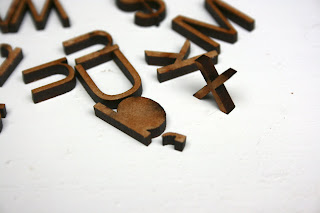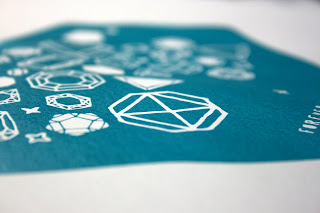OUGD201 Design Production - Print
1. Your ability to select, develop and evaluate a range of appropriate source material gathered through a breadth of appropriate research methods.
Initially breaking the subject matter of the "What is Good?" project I managed really well and through my initial pieces of investigation research I actually changed the subject of eavesdropping to overhearing based on the facts I obtained in researching. The material that I selected especially for the research could have been better in terms of its quantity, although the subject matter of the "What is Good?" project seemed limited in its content, after working on the project I think there were so many other directions in which I could have gone with the project, I only really exhausted obvious points of research and was less spontaneous early on. Throughout the development stages I used a lot of designers and and references to pull the concept together, looking at illustrators to brand identity design to influence and gain knowledge of what it is I wanted to achieve. I also completed one survey throughout the project, here I think I could have done more and unfortunately with the time constraints I have not had time to bring my resolutions to the client because of their availability, but I intend to show them what I have achieved at a later date, for the useful experience.
2. The level of investigation and experimentation into appropriate production media, processes and technologies.
The outcome for the "What is Good?" project was a branding, this branding could be seen on articles which you would normally find in a coffee house , I ended up producing a new menu design, business card, window vinyls and a mock-up coffee cup holder. influenced a lot by that idea of professional practice, the final outcome made use of various print processes which was part of the aim of the module and I practiced a lot of screen printing and finishes as well as digital printing to printed media and I also used a laser cutter to create crafted details and looking at how to emboss.
For the development in the production of the 16 Page Publication on print, a lot of the sources were secondary with the exception of workshops in Indesign and Photoshop, other than this I was looking at referencing useful books which I think I could have gone further with looking at printing in professional practice as not all facilities to print are available to me at the college, such as offset-lithography and flexography processes.
3. The breadth and quality of practical skills, ideas and development.
Looking at expanding my use of mediums and such I think I definitely tested, using screen printing and digital printing to create some interesting pieces which made use of various print processes. I think I could have gone further however with my design development and concept development, because I felt the subject of overhearing physically limited I limited myself in a way as to what I could do to package it. Having last year often used sketch books and such to document my ideas I went for sheets, it helped dramatically when presenting my ideas and I found the bigger the better. I would like to consider using bigger sheets as this often inspired me more than a daunting blank sketchpad of ideas.
4. The documentation, organisation and presentation of the work for this module.
I do not think that the work that submitted in digital form truly represented to what extent I researched and how much I really got involved with especially the "What is Good?" project. Maybe because I didn't document everything digitally where I used the blog to update my findings and such verbally as oppose to placing in images of the physical work that i was collecting. In terms however of my organisational skills, they have vastly improved. Using not only the google calendar but arranging my time using my personal diary and trying to use my time effectively, more so than I ever have done the previous year. In a similar sense I have also been taking pictures and properly documenting my work and what I have been doing not only n the course but I have also been doing creative things and even visit exhibitions more than before as well as organising times to print work and use facilities properly, and I think because of this I have been much more critically aware of the creative practice in general.
5. The success of your final products in relation to the briefs.
Mainly through sheer determination and the talks on professional practice I have stepped up to creating work that is better and quality and more importantly I see it through from the start to the finished product. For the branding created for the "What is Good?" project, it was very conceptual as to whether or not the product would work, but the concept allowed me to explore print based media not just as how it comes out of a machine but creating effects after digitally printing the product and knowing the knowledge I have now of the subject, I feel I could have done more, maybe created something which is more tactile and a physical product as oppose to a branding. But this project allowed me to see the bigger picture of design, by simply asking a local cafe business to help support what I was trying to do the idea of professional practice and working for someone seemed to make my final ideas more feasible.
The 16 page booklet however I felt didn't meet the expectations of what I had in mind of it achieving, the book although takes into account lots of the printing processes and such used I felt that I didn't really learn anything that was new, using only secondary sources for research I felt the information I was obtaining and documenting seemed to be simply copying existing knowledge. For the book I wanted it to use things that I had learnt in the workshops and be less of a copied, churned out book that is a miniature version of The Production Manual.
5 Things I will do differently next time and comments
1. Look for more primary sources of research and consider contacting/visiting professional practices in relation for research.
2. When developing ideas be more experimental, consider using a larger pieces of paper or illustrating concepts out bigger or straight away, and use more mock-ups.
3. Take time out to reflect and re-evaluate before committing to a concept, there could be another more successful direction to go in.
4. When presenting concept try to deliver in an orgainsed manner such as starting from the beginning or the end instead of making references to points or different times.
5. Look less at what other people are working on around me as a distraction from what I am working on and be confident on the concepts I am trying to achieve.
2. When developing ideas be more experimental, consider using a larger pieces of paper or illustrating concepts out bigger or straight away, and use more mock-ups.
3. Take time out to reflect and re-evaluate before committing to a concept, there could be another more successful direction to go in.
4. When presenting concept try to deliver in an orgainsed manner such as starting from the beginning or the end instead of making references to points or different times.
5. Look less at what other people are working on around me as a distraction from what I am working on and be confident on the concepts I am trying to achieve.





















































